Reading time: 9 minutes
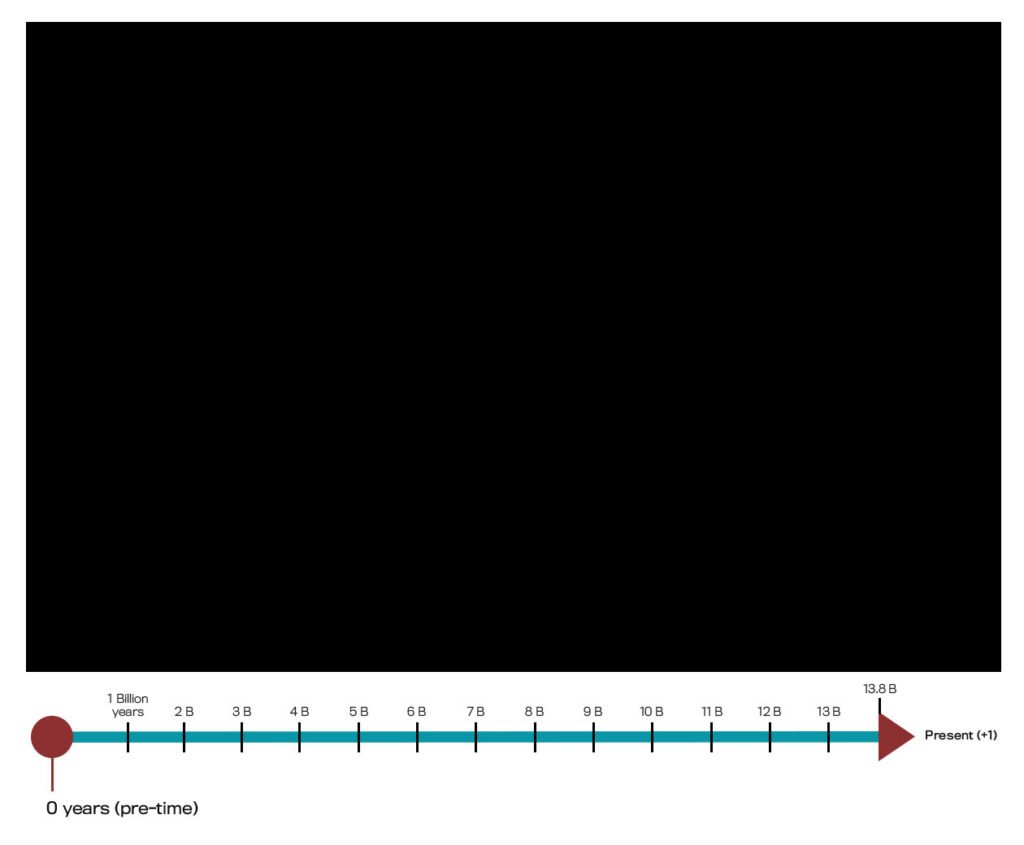
Our story begins in the dark.
Or really that’s not quite right; “light” didn’t yet exist, so without light, how can there be “darkness”?
And then sometime (or no time) later…
BANG!!!!!
From nothing, everything
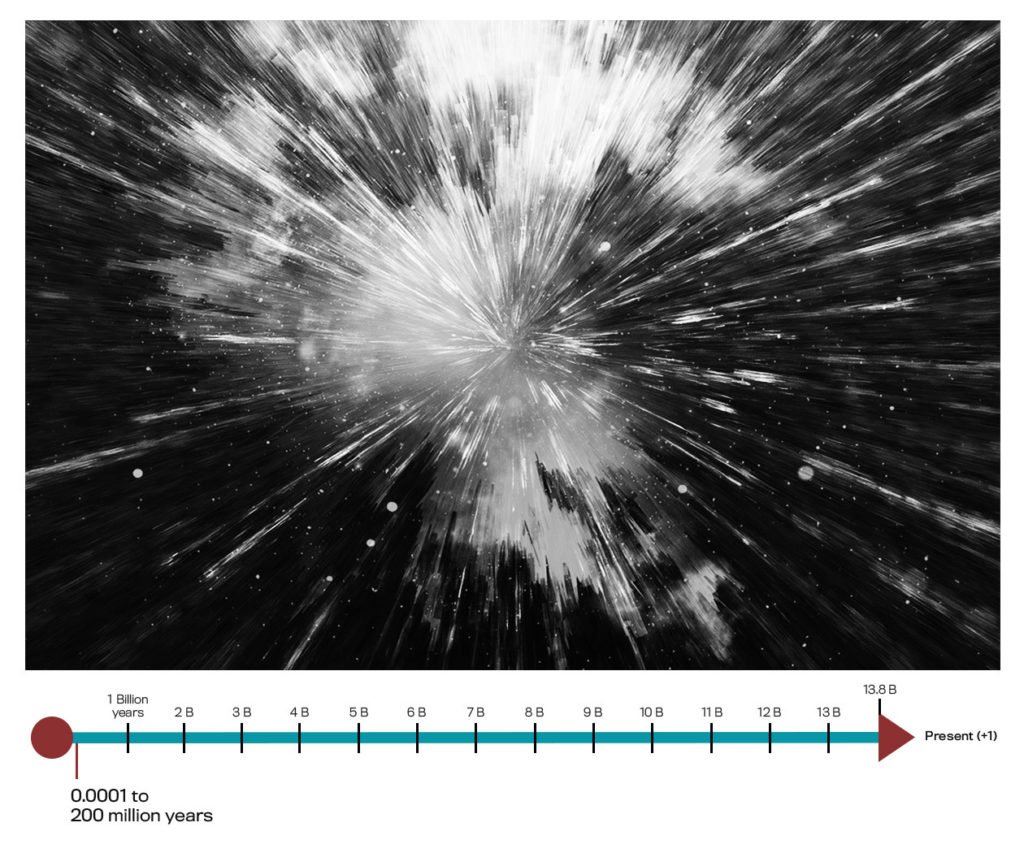
Everything in the universe emerged. Out of a single point smaller than an atom, all that would ever exist erupted forth. All of this vast energy that would become the universe spread outwards in all directions at an unfathomable speed.
This explosive and expanding cloud of heat and light began as a featureless mass. But soon as subatomic particles and the fundamental forces of physics formed, this mass coalesced into clusters of matter. Crushed down by gravity – the central unifying force of the universe – these clusters of dust and gas formed the first stars in massive thermonuclear explosions.
The first moments of “here, there is light” and “there, is dark.”
The cosmic community
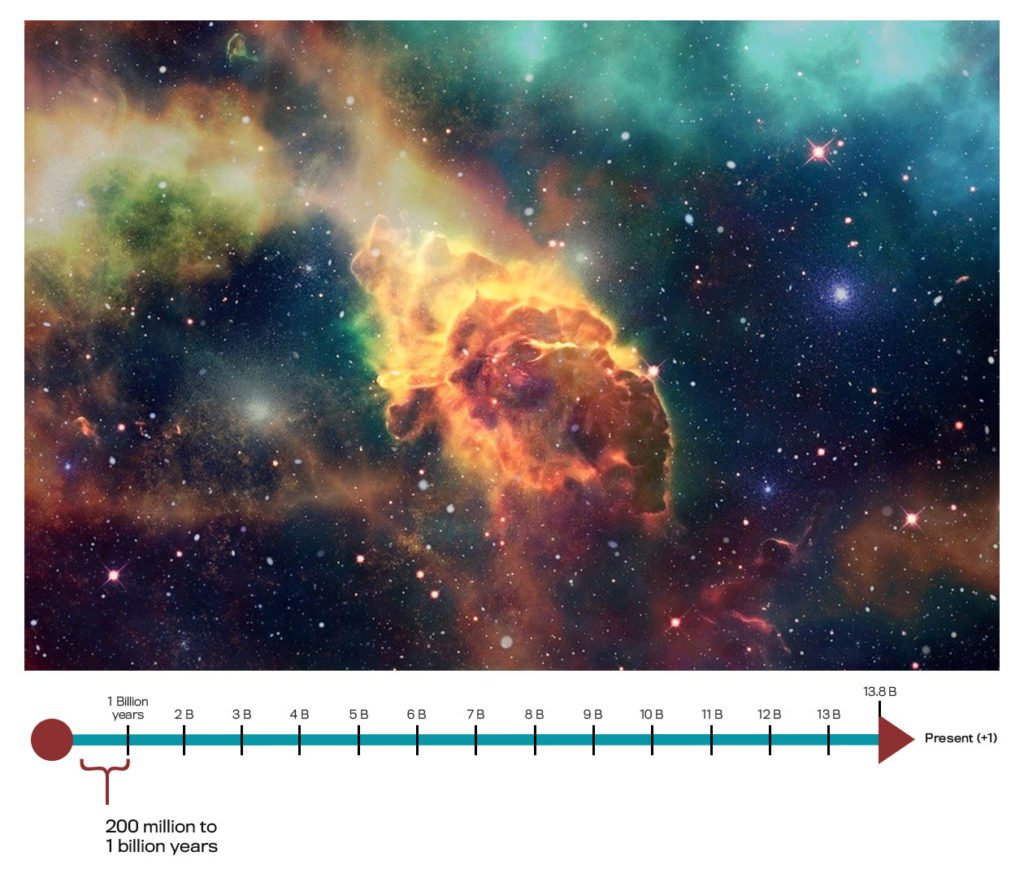
Brought together by gravity, the Great Connector, groups of stars coalesced into galaxies. Hundreds of billions of stars in hundreds of billions of galaxies spread outwards in all directions. An unfathomable number of stars soon populated the universe.
The first communities in the universe were formed.
Gravity continued its work on the clouds of dust and gas swirling around many of the stars after their explosive birth. A relentless series of collisions gradually formed the first planets, and moons around planets.
Out of these cataclysmic explosions and collisions, the stage was set for the universe as we know it today: planets revolving around stars; stars clustered into galaxies; galaxies extending infinitely (?) outwards, connected by vast, seemingly empty space.
Light becomes alive
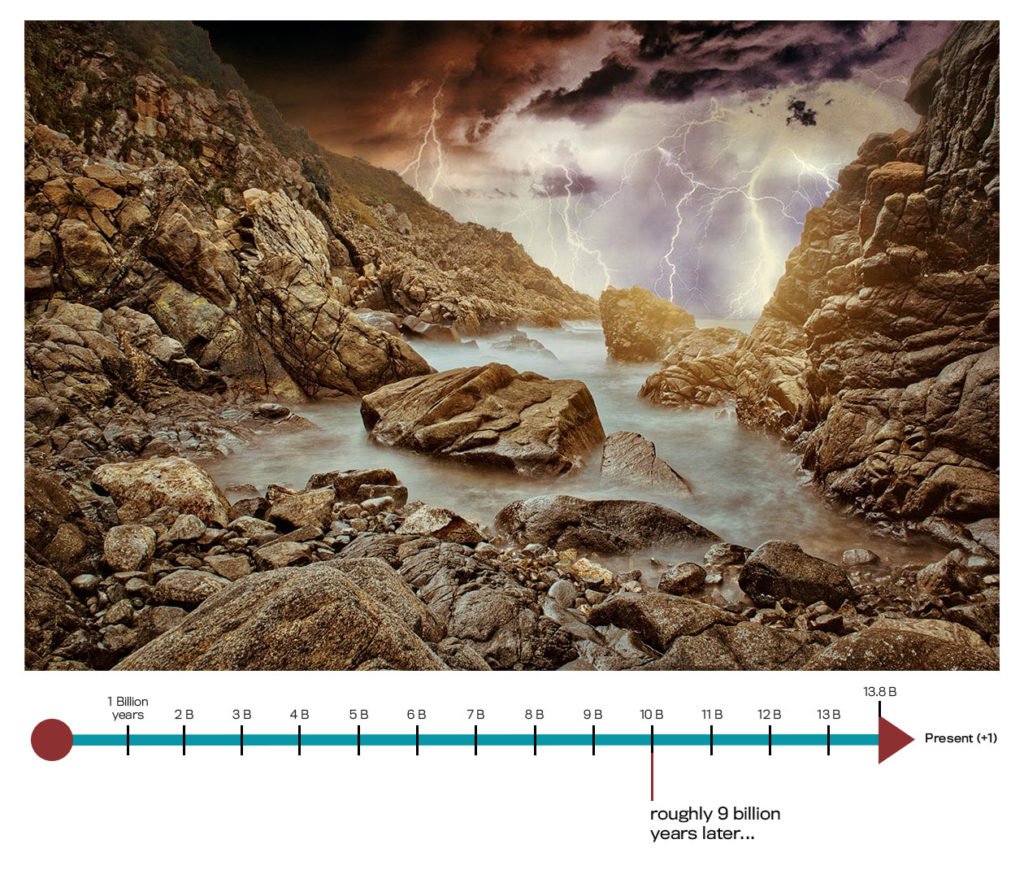
Time lapse nine billion years (give or take).
On a small, rocky planet circling an unassuming star on an outer ring of an average galaxy – one day, life emerged.
The conditions were just right: the right set of molecules, the right temperatures, and the right set of interactions led to the birth of single-celled organisms.
The universe would never be the same again.
Life on this planet kept things simple for quite a long time. Single-celled organisms ruled for endless eons, only giving way to multi-celled organisms after nearly two and a half billion years.
The great branching out
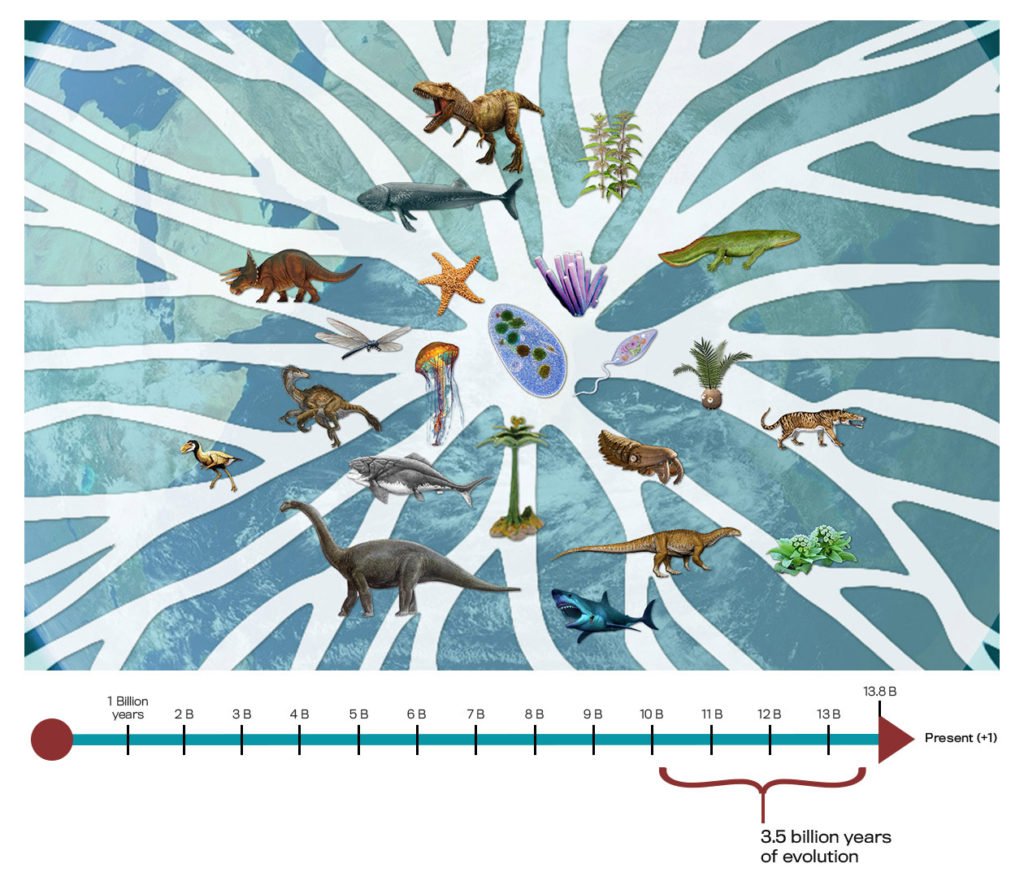
Then evolution, the Great Adaptor (or the Great Differentiator, depending on your perspective), kicked in at an exponential rate. The family tree began to branch out in countless directions.
Multicellular life evolved into simple, spineless animals after a 100 million years or so. Life branched into ever increasing complexity within the seas, growing a spine after another 250 million years, coming onto the land not long after that (if you consider 20 or 30 million years “not long”).
Another 300 million or so years later, one of earth’s celebrities arose: the dinosaur. Dinosaurs went on to rule the earth for a relatively brief period, somewhere around 170 million years.
Alas, a common twist to the story of life is that all life forms will sooner or later give way to new forms of life. Mass extinctions are a thing, and here came the fifth. Following a global smackdown at the hands of a massive asteroid (still can’t escape those collisions), dinosaurs would dwindle… and mammals would rise up.
A familiar face
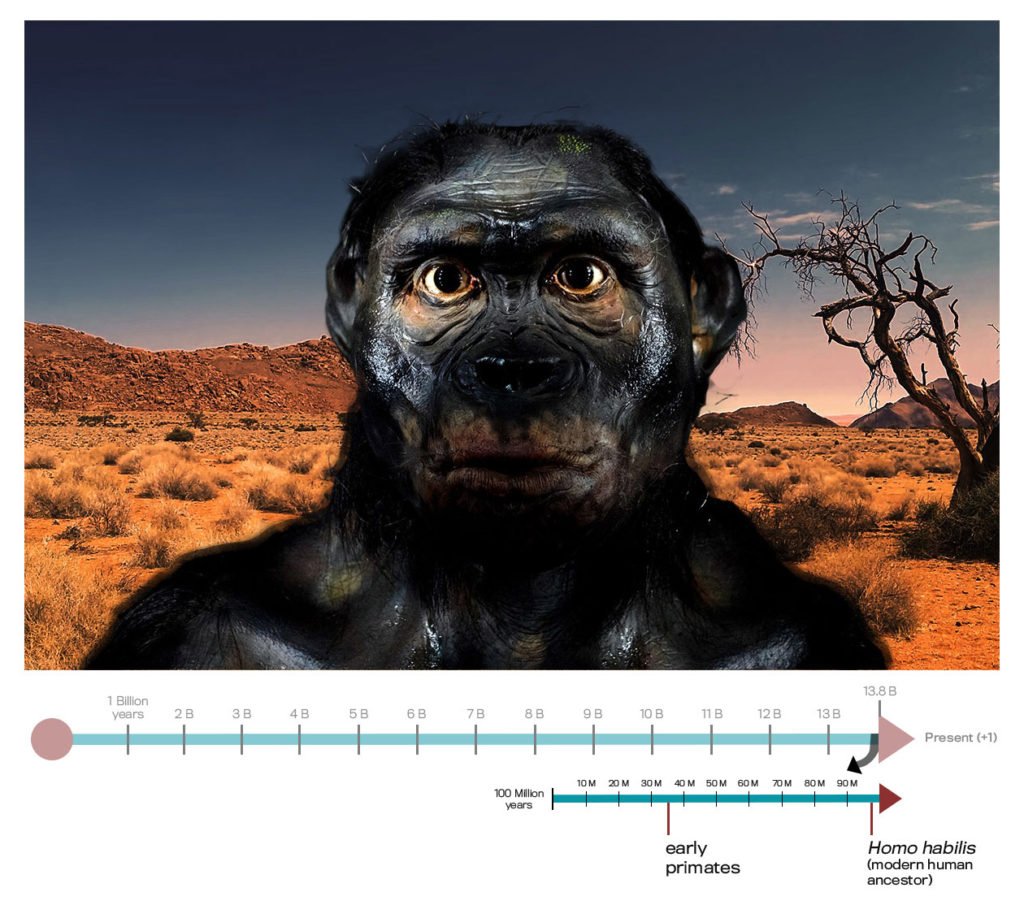
Mammals would soon fill the spaces left by their massive former neighbors. Two million years after the demise of the dinosaurs, primates began a long march to global relevance. Over the next 50 million years, primates took many faces, until one very familiar face emerged: the primate known as humans.
Over the course of six million years, humans would continue to evolve until one dominant species began to spread around the globe.
Despite middling strength, unimpressive speed, and jaws and claws that can barely crack a nut, Homo sapiens would emerge as the ruler of earth.
Their story, which is of course our story, is shaped by story itself.
Mightier than the sword
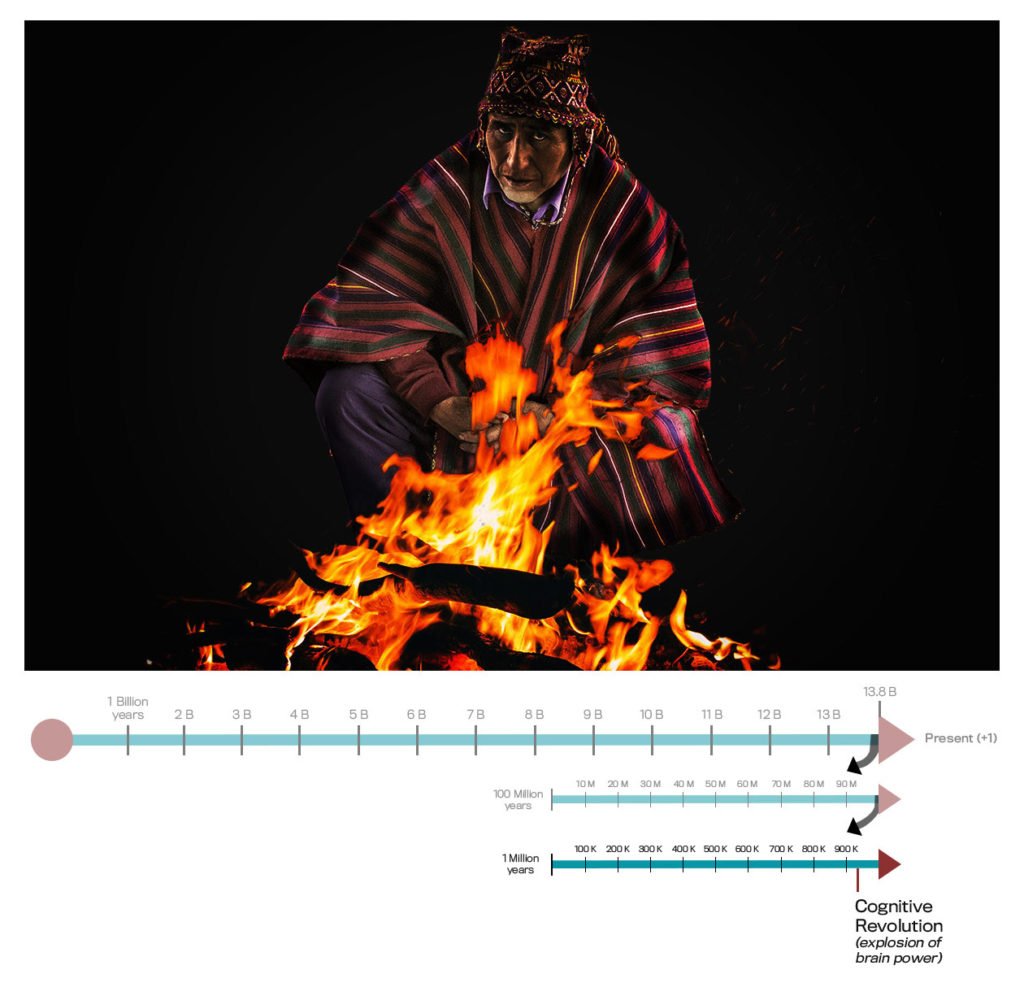
All forms of life found a way of carving out a niche. Evolution rewarded those who could adapt to the constant changing circumstances of life on this planet. The reward was spreading their genes into the next generation.
All forms of life found a way of carving out a niche. Evolution rewarded those species that could adapt to the constant changing circumstances of life on this planet. The reward was spreading their genes into the next generation: the gift of ongoing life.
For humans, this adaptation was their large brains, which helped them to cooperate effectively. They could hunt animals larger than them, protect their tribe, and form a collective memory. But this ability alone didn’t describe their meteoric rise. Other primates, even other mammals could also work in packs to eat well.
For humans, one day following the Cognitive Revolution, their large brains gave them the gift of language. From language came story. From story came myth and meaning. From myth and meaning came the ability to form larger and larger packs – bonded not by blood, but a shared story.
From these larger packs came villages, then towns, then cities, and then civilization (and eventually its discontents).
New foundations of humanity
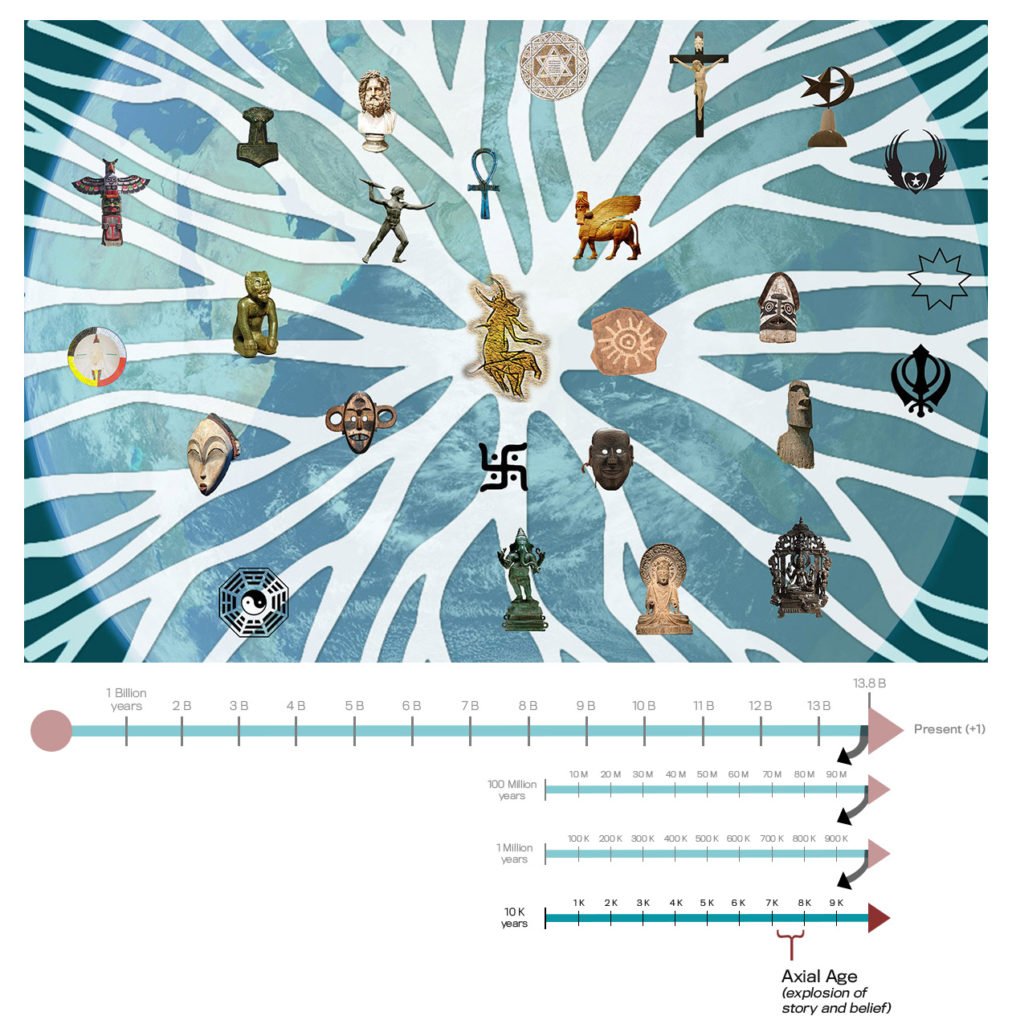
Their stories evolved into countless forms, shaped by the distinct causes and conditions of place and time and by the persistent collisions of cultures that forced belief systems to adapt.
Roughly 9,000 years after humans adopted an agricultural way of life, many of these belief systems yielded the Axial Age: a turning point in human history.
Frustrated by the violence and oppressive rituals that pervaded many societies, sages around the world offered new alternatives. They shared revolutionary thinking about compassion and treating others with respect. These beliefs would continue to influence the world of humans until the present day.
Then emerged the age of Science and Industry, opening up an explosion of growth and expansion of human societies. Humans soon dominated the surface of the planet, using exponentially greater resources to feed themselves and establish territories. They planted crops and raised livestock in every fertile field, built roads wrapping the globe (that would soon be plagued by traffic jams), wired homes with electricity, and just grew and grew and grew.
Over the course of 12,000 years, these humans went from discovering that edible plants could be forced to evolve into desirable forms, to launching themselves off the surface of the planet to be closer to the stars that gave birth to them.
Along with vast improvements in the comfort and security of millions of humans, their exponential growth also brought challenges.
Powering civilization by burning dead dinosaurs came at a cost, as the trapped carbon dioxide gradually began to heat the planet, creating an existential threat. An ironic threat at that: potential extinction related to burning already extinct species.And an increasing focus on the “self-as-supreme”, coupled with a view of the planet as an inert resource ripe for the taking, led to rampant materialism and resource exploitation. This often led to a crisis of spirit, a loss of meaning and purpose – which further fueled the cycle of consumption, dissatisfaction, and more consumption.
Onwards and inwards
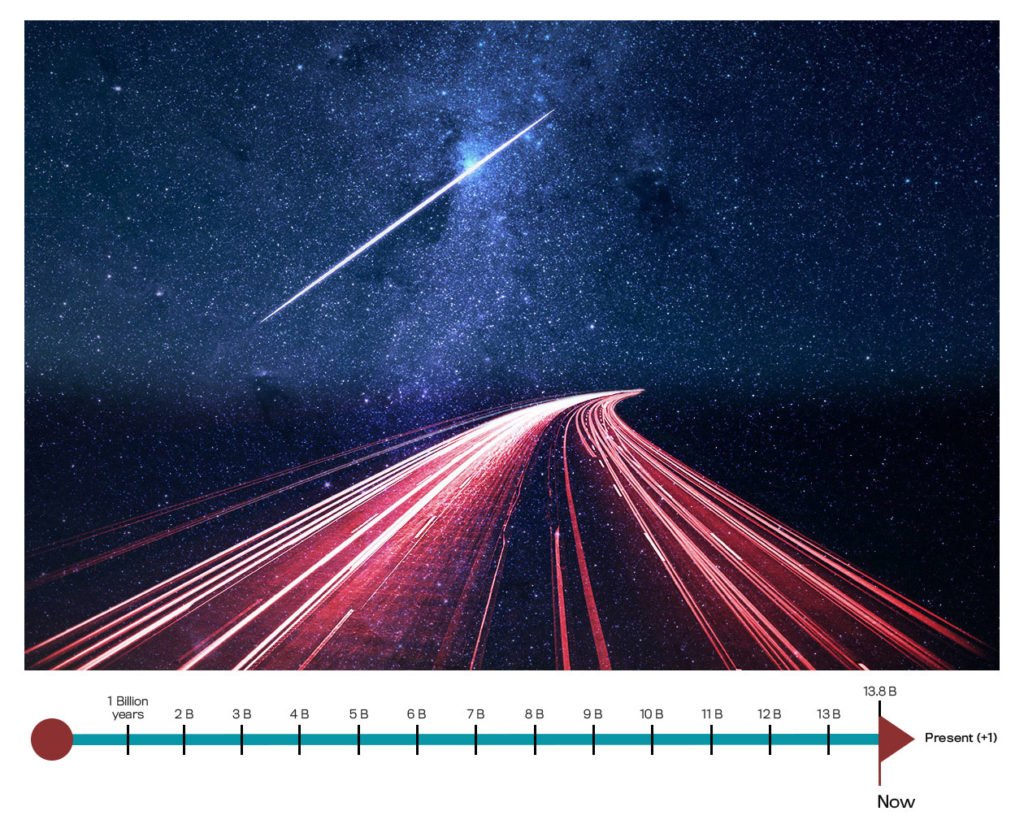
So here we are: perhaps on the edge of a new Axial Age, one in which we integrate the best of our discoveries – both from the realm of spirit and subjectivity and the domain of science and objectivity – to forge a new path for humanity.
Come back soon for some further explorations of the challenges facing our species and some perspectives on how a renewed focus on spirituality and meaning might help to find a path forward.
References and related reading
- The Big History Project: https://www.bighistoryproject.com/chapters/1#intro
- The evolution of life on earth: https://www.newscientist.com/article/dn17453-timeline-the-evolution-of-life/
- The evolution of humans: http://humanorigins.si.edu/evidence/human-evolution-timeline-interactive
- Sapiens by Yuval Noah Harari
- The Great Transformation by Karen Armstrong

